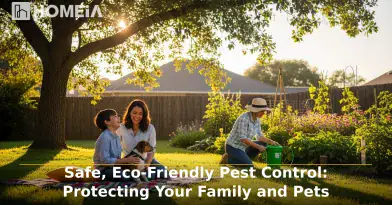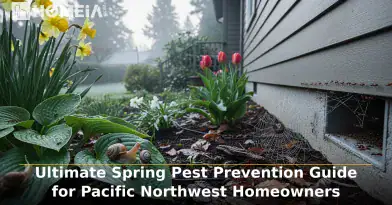Complete Home Pest Inspection Checklist: What Professional Inspectors Look For
- Local Editor:Local Editor: The HOMEiA Team
Published: Oct 17, 2025
- Category: Home Maintenance
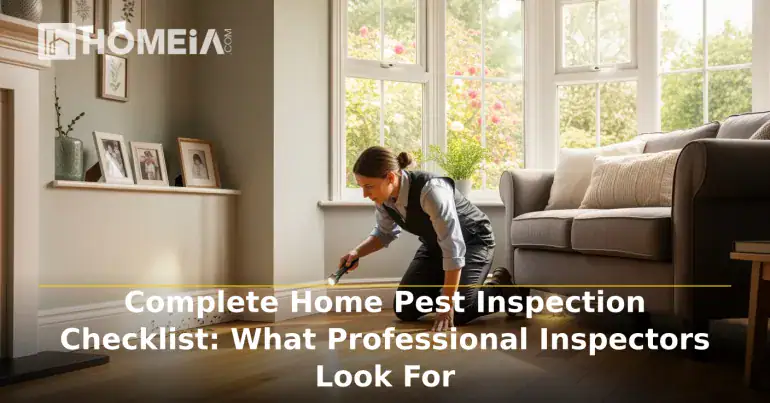
Discovering a pest problem in your home can be a stressful experience. However, many infestations can be caught early or even prevented entirely with a thorough, regular inspection. You don’t need to be an expert to perform a basic check. This guide will walk you through the same process that professional pest inspectors use, providing a clear home pest inspection checklist to follow.
By knowing what to look for and where to search, you can identify early warning signs of vermin like termites, rodents, and ants before they cause significant damage. A proactive DIY inspection, combined with periodic professional check-ups, is the best defense against costly repairs and infestations. Let’s grab a flashlight and start the training.
Table of Contents:
- The Inspection Mindset: Methodical and Thorough
- Exterior Inspection: Fortifying Your First Line of Defense
- Foundation and Crawlspace: The Gateway for Pests
- Interior Common Areas: The Kitchen and Living Room
- Bathrooms, Laundry, and Utility Rooms: Moisture Hotspots
- Attic and Basement: The Final Frontier
- When Your DIY Inspection is Done: Next Steps
- Frequently Asked Questions: Home Pest Inspections
The Inspection Mindset: Methodical and Thorough

A successful pest inspection is all about being methodical. Professionals don’t wander around; they work methodically to ensure every potential hotspot is covered. You should do the same. Start from the outside of the home and work your way in. Then, move from the bottom up—begin in the basement or crawlspace, go through each room on the main floor, and finish in the attic.
Take your time and be meticulous. Look in places normally ignored: under sinks, behind appliances, inside closets, and along baseboards. Bring a notepad to jot down any signs you find, notably droppings, shed wings, or gnaw marks. An organized approach helps find the subtle clues that pests leave behind.
Safe, Eco-Friendly Pest Control: Protecting Your Family and Pets
Homeowners today are more mindful of what they use around their families and pets. Harsh chemical sprays are becoming a thing of the past as modern pest control shifts toward safer, eco-friendly methods. These treatments combine science and strategy — known as Integrated Pest Management (IPM), can solve your pest problems without compromising a home’s safety. You can have…
Exterior Inspection: Fortifying Your First Line of Defense

The outside of your home is the first place to stop pests from getting in. Walk the entire perimeter of your house. Look for cracks in the foundation and gaps around where utility lines enter. Check the condition of your window and door screens, ensuring there are no tears. Examine wood siding, trim, and door frames for signs of damage, especially at ground level, for termites or carpenter ants.
Inspect the roof for loose, damaged, or missing shingles and ensure the chimney has a secure cap. Vegetation is key; have tree branches trimmed back from the roof and that shrubs are not touching the siding. Proper exterior maintenance is a critical step in integrated pest management.
Foundation and Crawlspace: The Gateway for Pests
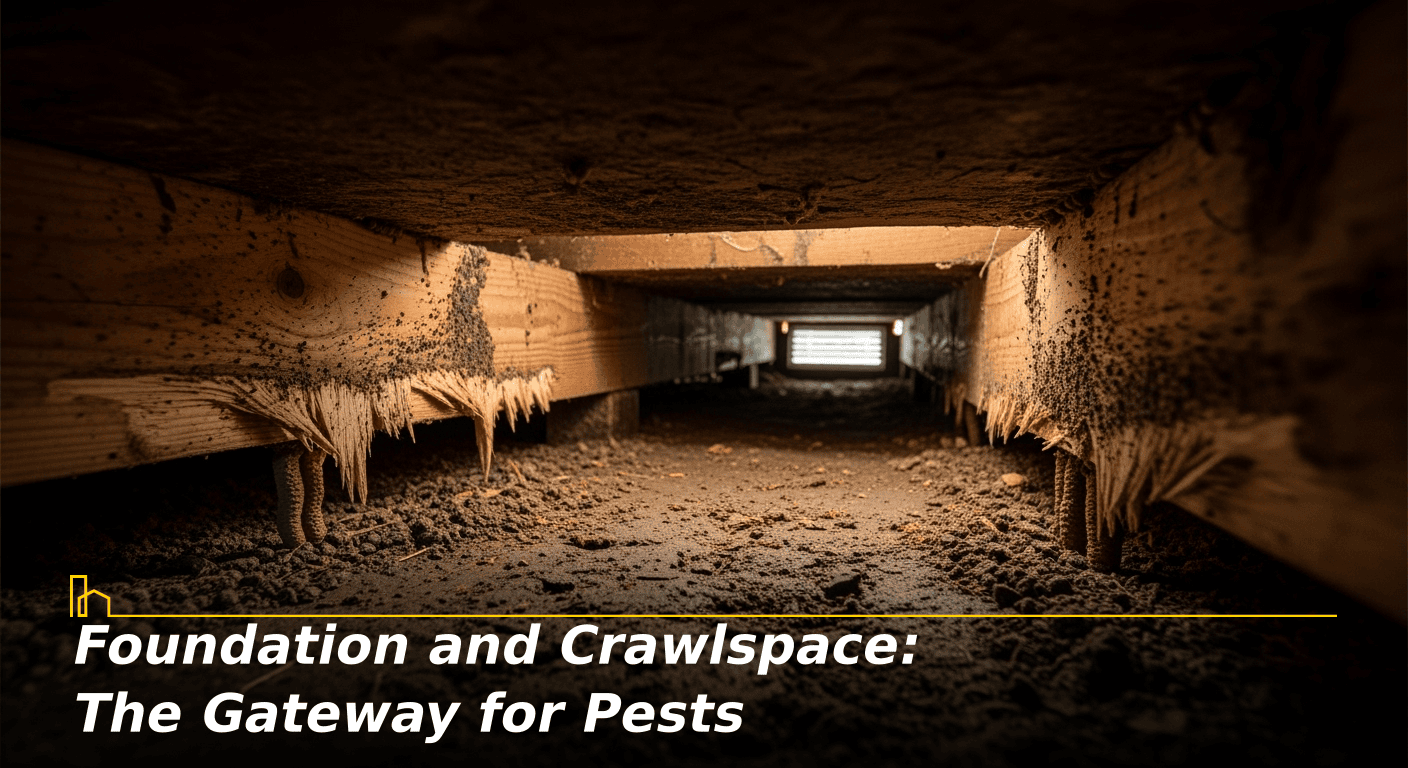
Your home’s foundation and crawlspace are prime entry points for a variety of pests. From the outside, look for mud tubes on foundation walls, a telltale sign of subterranean termites. These pencil-sized tunnels are how termites travel from their soil colony to the wood in your home. If you have a crawlspace, put on protective gear and take a look inside.
Use your flashlight to check for standing water, and examine wooden joists and subfloor for any signs of moisture damage, rot, or tunneling. Check the vapor barrier for tears. A damp, dark crawlspace is an open invitation for tiny intruders, so ensuring it’s dry and well-ventilated is an effective pest prevention step you can take.
Ultimate Spring Pest Prevention Guide for Pacific Northwest Homeowners
Spring in the Pacific Northwest is a season of renewal — with rain turning the landscape lush and flowers bursting into bloom. But that same moisture and warmth also awaken ants, spiders, rodents, and slugs searching for food, water, and shelter. Homes that offer easy access can quickly attract these pests…
Interior Common Areas: The Kitchen and Living Room

The kitchen is the heart of the home, and unfortunately, it’s also a magnet for pests due to the abundance of food and water. Inspect under the sink for leaks and look for gaps around pipes. Pull out your refrigerator and stove to check for crumbs, spills, or signs of pests droppings like cockroaches (which look like coffee grounds) or mice.
Examine inside pantries and cabinets, particularly in the corners. In living areas, look along baseboards, behind furniture, and around the corners of rooms. Pay attention to any strange smells; a musty odor can indicate rodents or moisture problems. Remember, clutter provides hiding places. An organized home is easier to inspect and less attractive to varmints.
Bathrooms, Laundry, and Utility Rooms: Moisture Hotspots
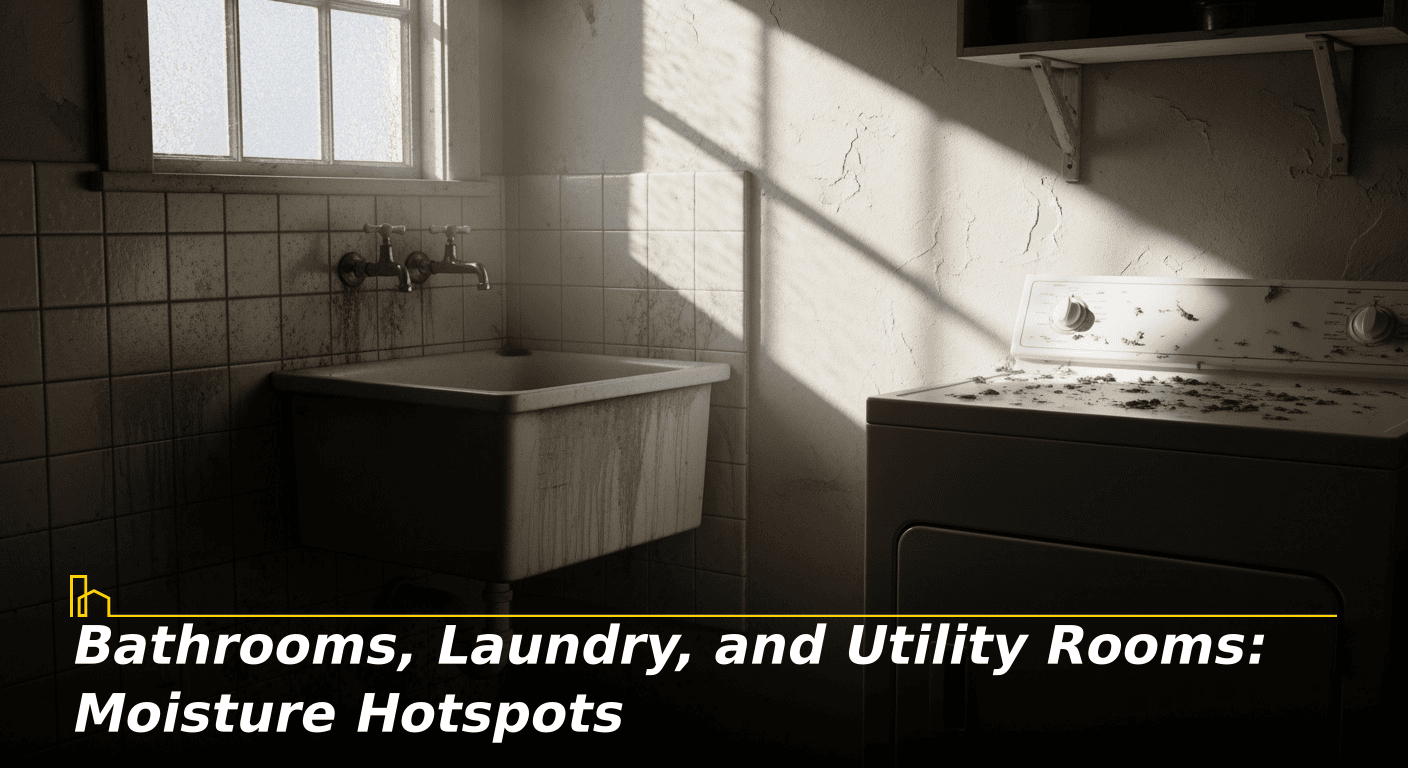
Bathrooms, laundry rooms, and utility rooms are often the wettest areas in a house, making them a top target for silverfish, cockroaches, and drain flies. Check under all bathroom and laundry room sinks for leaks and moisture. Look for peeling caulk or grout around tubs and showers, as the dampness behind is enticing.
Inspect around your washing machine’s water connections and the water heater for any signs of condensation or leaks. Ensure vents for your clothes dryer leads outside and unclogged, which can be a fire hazard and a nesting material for pests. Keeping these areas dry through necessary ventilation and prompt repairs is essential.
Smart Pest Control: How Technology is Revolutionizing Home Pest Management
Imagine a pest control system that detects problems before you even see a single bug. This isn’t science fiction — it’s the reality of smart pest control. With IoT sensors, AI-powered monitoring, and precision tools, pest management is now smarter, more efficient…
Attic and Basement: The Final Frontier
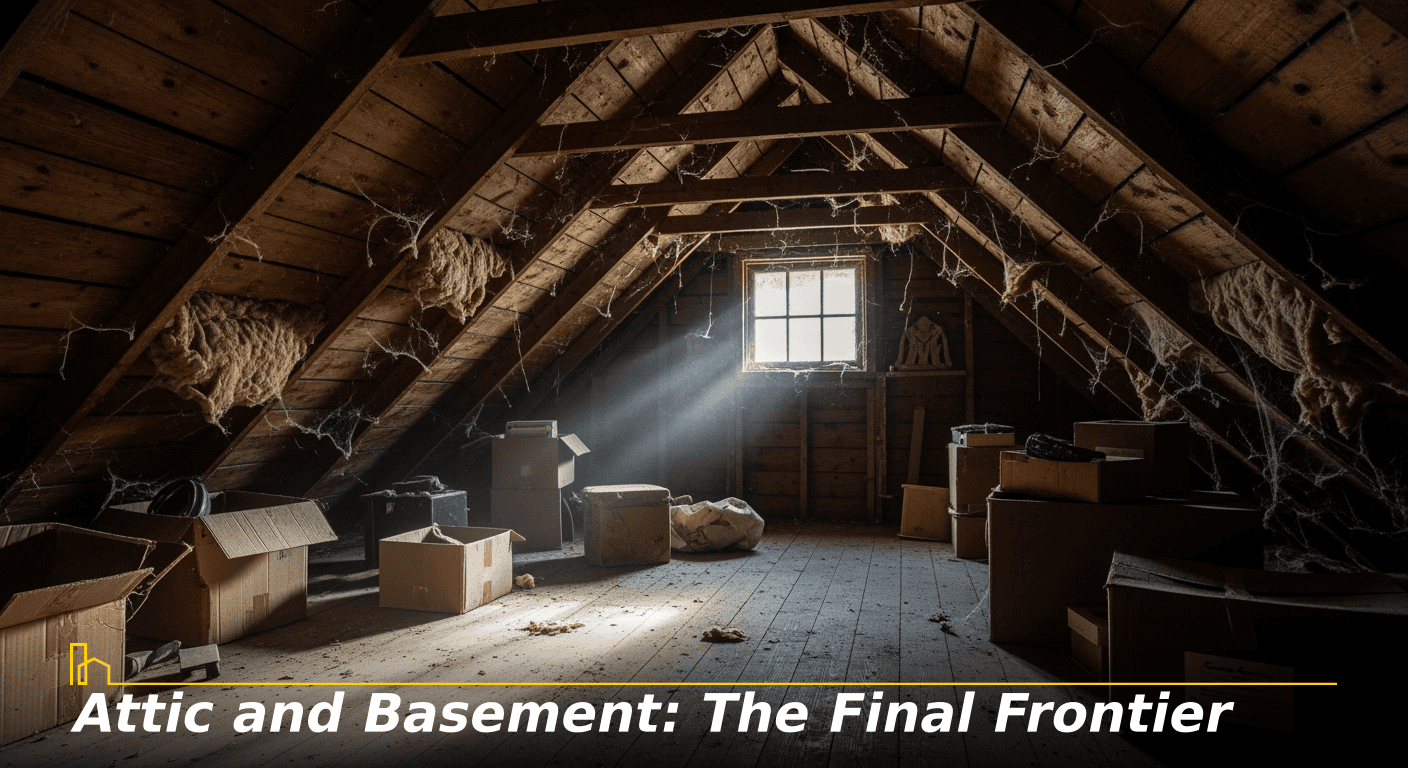
Attics and basements are often out of sight and out of mind, which makes them perfect havens for pests. In the attic, use a powerful flashlight to look across the insulation for droppings, trails, or nesting materials. Check the underside of the roof sheathing for light coming through, which indicates entry points. Look for stained wood, which may point to a leak.
In the basement, inspect areas where the foundation meets the wooden frame of your house (the sill plate) for signs of termites or carpenter ants. Check stored items, especially cardboard boxes, for activity. Both areas should be well-ventilated and dry. If you find significant evidence of pests in these spaces, it’s a clear sign to call a professional for a more detailed assessment and potential drainage solutions.
When Your DIY Inspection is Done: Next Steps

After completing your inspection, review any notes. If you find minor issues including some ants or small gaps, these can likely be addressed with caulk and improved sanitation. However, if you discover signs of a larger problem — like rodent droppings, termite mud tubes, frass (sawdust-like debris from wood-boring insects), or evidence of a nest — it’s time to call a Professional Pest Control Company.
Our professionals have the training and tools to correctly identify the issue, assess the extent of the infestation, and recommend a targeted treatment plan. Don’t risk letting a small problem become a major headache. Schedule a professional home inspection for peace of mind. And if your inspection has you thinking about a new home altogether, our resources on essential steps for moving to a new city and the best places to live in Tennessee can help guide your next move.
Recommended for you
Frequently Asked Questions: Home Pest Inspections
1. What is the single most common entry point you find for pests?
Through our thousands of inspections, the most common entry points are:
- Gaps around utility lines (where plumbing, gas, or cable lines enter the house).
- Cracks in the foundation or where the foundation meets the siding.
- Damaged or poorly sealed door sweeps and window frames.
2. I’m buying a new home. Should I get a pest inspection even if it looks clean?
Yes, 100%. A professional pest inspection is as crucial as a general home inspection. We look for evidence of past or current infestations (like termite damage or rodent entry points) that are invisible to an untrained eye. This can save you from expensive surprises and is a key part of the home buying process.
3. What’s the difference between a DIY inspection and a professional one?
DIY Inspection | Professional Inspection |
|---|---|
| Relies on visible, obvious signs. | Uncovers hidden evidence in walls, attics, and crawlspaces. |
| General knowledge of pests. | Identifies specific pests, their biology, and entry points. |
| Basic tools (flashlight). | Uses specialized tools like moisture meters, borescopes, and UV lights. |
| Provides a basic assessment. | Delivers a comprehensive report and a customized treatment plan. |
4. How often should I do a full DIY pest inspection?
We recommend a thorough DIY walk-through of your home’s interior and exterior once per season. Pests are active year-round, and seasonal changes create new opportunities. A quick check each season helps catch problems early.
5. I found one mouse. Does that mean there’s an infestation?
Where there is one mouse, there are almost always more. A single mouse is a warning sign. They are social breeders, and if one has found a way in with access to food and shelter, it is likely part of a family. It’s best to call a professional immediately to identify the scale of the problem and seal entry points.
Table of Contents:
- The Inspection Mindset: Methodical and Thorough
- Exterior Inspection: Fortifying Your First Line of Defense
- Foundation and Crawlspace: The Gateway for Pests
- Interior Common Areas: The Kitchen and Living Room
- Bathrooms, Laundry, and Utility Rooms: Moisture Hotspots
- Attic and Basement: The Final Frontier
- When Your DIY Inspection is Done: Next Steps
- Frequently Asked Questions: Home Pest Inspections
HOMEiA is a city guide site where visitors can find detailed information about communities of interest. HOMEiA’s City Guides, created in partnership with local writers and editors, are curated lists of the best, safest, and most affordable places to live. The guides feature the HOMEiA Score, a proprietary index that rates communities on such factors as housing costs, education, employment, etc.
HOMEiA.com aims to be the premier site for people planning to relocate, providing them with insightful content and connecting them with skilled real estate professionals.
We also empower real estate professionals to establish or strengthen their web presence by highlighting their experience, knowledge and achievements. If you’re selected to join our list of certified real estate professionals, you will distinguish yourself from your peers — and earn HOMEiA’s support.
If you believe in HOMEiA’s mission, please share our website with others.
Table of Contents:
- The Inspection Mindset: Methodical and Thorough
- Exterior Inspection: Fortifying Your First Line of Defense
- Foundation and Crawlspace: The Gateway for Pests
- Interior Common Areas: The Kitchen and Living Room
- Bathrooms, Laundry, and Utility Rooms: Moisture Hotspots
- Attic and Basement: The Final Frontier
- When Your DIY Inspection is Done: Next Steps
- Frequently Asked Questions: Home Pest Inspections

